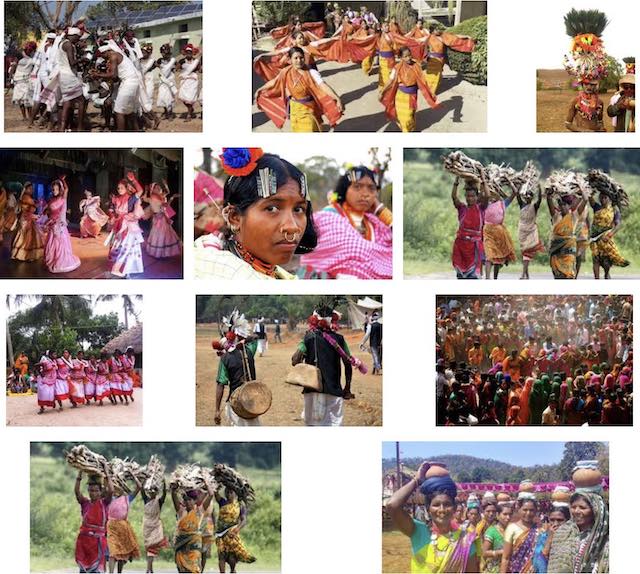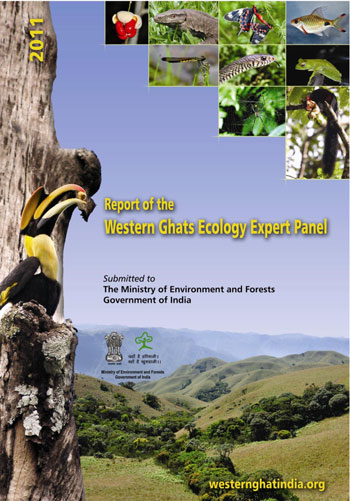
“Guardian angels of the river”
Achuthsankar S. Nair | To read the full story, click here >>
Unlike city residents who pollute the water, tribal communities upstream revere the river
History is often the story of kings, ministers, chieftains and landlords. The story of ordinary human beings who also lived around them at the same time is very often not recorded. So it is with stories of the Karamana river. While names and tales of stalwarts who lived on its banks are documented, the names of those who inhabit the forests near the source of the river go unrecorded.
The Karamana river is not just a river associated with the city. It has good friends upstream; there are still places where the people take care of the river and the river is very much a part of the daily lives of those people. The health of the river is much better in those places. A couple of kilometres upwards of Karamana bridge is Mudavanmughal padavu where the Corporation has a self-help thoni (country boat) service that many local residents use to take the bus to Pappanamcode. One can find people bathing, washing, fishing and young children befriending the river and having great fun. Vijayan, a former headload worker living in the area, has seen the river deteriorate and points to a roadside gutter culminating in the river very near the padavu where people take a bath. He says that, at times, a bath in the river results in terrible itching. But the river here is healthier than in Karamana. […]
If we travel to the river basin, we can see some of the major tributaries of the river. One of them, Thodayar, joins the Karamana river at a spot known as Cheppila Kayam. The Kani settlements in the Western Ghats seem to be the real guardian angels of the river.
Near the catchment area of Peppara dam is Chemmankaala where a few Kani settlements still exist. They had to shift from their original settlement when the dam was built about four decades ago. One has to walk or rather climb the rocky path by the Thodayar from Chemmankaala and reach the source of the river – Vaazhvanthol Falls, where the water falls and crashes on an amazingly flat rock.
Elephants seem to be around the corner everywhere near the river. Chemmankaala is protected both by a trench and an electric fence. Mallan Kani can identitify a dozen ‘Aanathaaras’ (elephant tracks) on the river side here. Many trees here have a smooth bark as the elephants use these trees to rub their backs!
Kani gods are Mallan Thampuran, Narayanan Kutti Thampuran, Kaalan Thampuran, Ponnaruvi Amma and Moopathi Amma. During their festival ‘Koduthi’, they assemble in the ‘Paattappura’ and offer ‘Paatu’ and ‘Oottu’. […]
There are two species of crocodiles, the smaller and more common, generally six or seven feet in length, and not ordinarily dangerous to human life; the larger reaching the length of eighteen or twenty feet. The latter are more dangerous; still, one does not often hear of lives being lost by them in this part of India”.
Mallan Kani’s wife, Aruvi, is a woman in her early forties, who by her name and giggles, remind you of the river itself. She sings many traditional songs, but a little confusing to city dwellers, for the Malayalam is strange and the setting is not easily recognisable. One of the Kani songs is a fable explaining the origin of the Karamana River. Padmanabha and his ‘machunan’ (brother-in-law) went to a forest to collect honey for Sita (when she was seven months pregnant). When thirst overcame them, they looked for water. They heard the sound of a river inside a ‘Mayila’ tree, flowing up and down. They cut open the tree, quenched their thirst, at first standing, then sitting and finally lying down. The water swept them away in two directions, Padmanabha towards Thiruvananthapuram, thus creating Karamana river (and Padmanabha promptly settled down at the foot of the river) and the brother-in-law (a Tamil king) flowed to the other side of the mountain range as a river into Tamil Nadu. Their goddess Ponnaruvi Amma seems to be a personification of the Karamana river with which they peacefully co-exist. The pristine water of the Thodayar would put dwellers of the capital city to great shame. The Kanis let the water flow unblemished, but as it enters the city, in a span of a few kilometres, it becomes a dangerous concoction.
The Makki Sastha temple on the banks of one of the tributaries to Thodayar is unique – it has no roofed enclosure. An idol stands exposed on an open platform with some recently acquired Hindu temple around it.
(Continuing the weekly series on the Karamana river, written by Dr. Achuthsankar S. Nair, head of the Department of Computational Biology and Bioinformatics, University of Kerala. He is a music and history buff. Contact the author at sankar.achuth@gmail.com)
Source: Guardian angels of the river – The Hindu, Metro Plus, October 12, 2012
Address : https://www.thehindu.com/todays-paper/tp-features/tp-metroplus/guardian-angels-of-the-river/article3989657.ece
Date Visited: Tue Mar 18 2014 17:05:43 GMT+0100 (CET)
[Bold typeface added above for emphasis]
Up-to-date reports by Indian experts and journalists
Search tips
Combine the name of any particular state, language or region with that of any tribal (Adivasi) community.
Add keywords of special interest (music, poetry, dance just as health, sacred grove and biodiversity); learn about the rights of Scheduled Tribes such as the “Forest Rights Act” (FRA); and the United Nations “Declaration on the Rights of Indigenous Peoples”, “Universal Declaration of Human Rights”, “women’s rights”, or “children’s right to education”.
Ask a question that includes “tribal” or “Adivasi”, for instance: “Adivasi way of life better?” (or “tribal way of life worse?”)
Specify any particular issue or news item (biodiversity, bonded labour and human trafficking, climate change, ecology, economic development, ethnobotany, ethnomedicine, global warming, hunter-gatherers in a particular region or state, prevention of rural poverty, water access).
For official figures include “scheduled tribe ST” along with a union state or region: e.g. “Chhattisgarh ST community”, “Himalayan tribe”, “Scheduled tribe Tamil Nadu census”, “ST Kerala census”, “Particularly Vulnerable Tribal Group Jharkhand”, “PVTG Rajasthan”, “Adivasi ST Kerala”, “Adibasi ST West Bengal” etc.
In case the Google Custom Search window is not displayed here try the following: (1) toggle between “Reader” and regular viewing; (2) in your browser’s Security settings select “Enable JavaScript” | More tips >>
Note: hyperlinks and quotes are meant for fact-checking and information purposes only | Disclaimer >>
List of websites covered by this Google custom search engine
Academia.edu (platform for academics to share research papers) – www.academia.edu
Archive.org – https://archive.org
Centre for Science and Environment – https://www.cseindia.org
Current Conservation – https://www.currentconservation.org
Development and Cooperation (D+C) https://www.dandc.eu
Down To Earth (India) – www.downtoearth.org.in
India Environment Portal – www.indiaenvironmentportal.org.in
Harnessing Nature Magazine – https://harnessingnature.online
Mongabay-India – https://india.mongabay.com
M S Swaminathan Research Foundation – www.mssrf.org
Navdanya (protecting India’s biodiversity based food heritage) – https://navdanya.org
Third World Network (Penang, Malaysia) – https://twn.my
The Shola Trust (nature conservation in the Nilgiri region) – www.thesholatrust.org

Indian online periodicals and platforms | Images view >>
~ ~ ~
Personalize your CustomSearch by combining other search words >>
(e.g. name of a tribal community and region, a craft, or dance and puppetry)
Research the above issues with the help of Shodhganga: A reservoir of theses from universities all over India, made available under Open Access >>
Note: hyperlinks and quotes are meant for fact-checking and information purposes only | Disclaimer >>

Celebrations and Convergence for
Conservation In Western Ghats (PDF, 3 MB) >>
Learn more
Western Ghats tribal heritage and ecology >>
Learn more
Atree.org | Ashoka Trust for Research in Ecology & the Environment (posts)
Biodiversity | Biodiversity hotspot | Hyderabad biodiversity pledge
Climate change | Audio | The Climate Question (BBC Podcast)
eBook | Background guide for education
Ecology and environment | Eco tourism | Tourism | Wildlife tourism
Environmental history and what makes for a civilization – Romila Thapar
Equations blog (Equitable Tourism Options)
Forest Rights Act (FRA) | Hunter-gatherers | Illegal mining | Legal rights over forest land
Information provided by Indian government agencies and other organizations (FAQ)
Nature and wildlife | Crocodile | Elephant | Tiger | Mangrove forest | Trees
PARI’s tales from tiger territory | People’s Archive of Rural India (PARI)
Shola Trust | Nilgiri Biosphere
Water and development – India’s tribal communities
Western Ghats – tribal heritage & ecology
What is the Forest Rights Act about?
Who is a forest dweller under this law, and who gets rights?